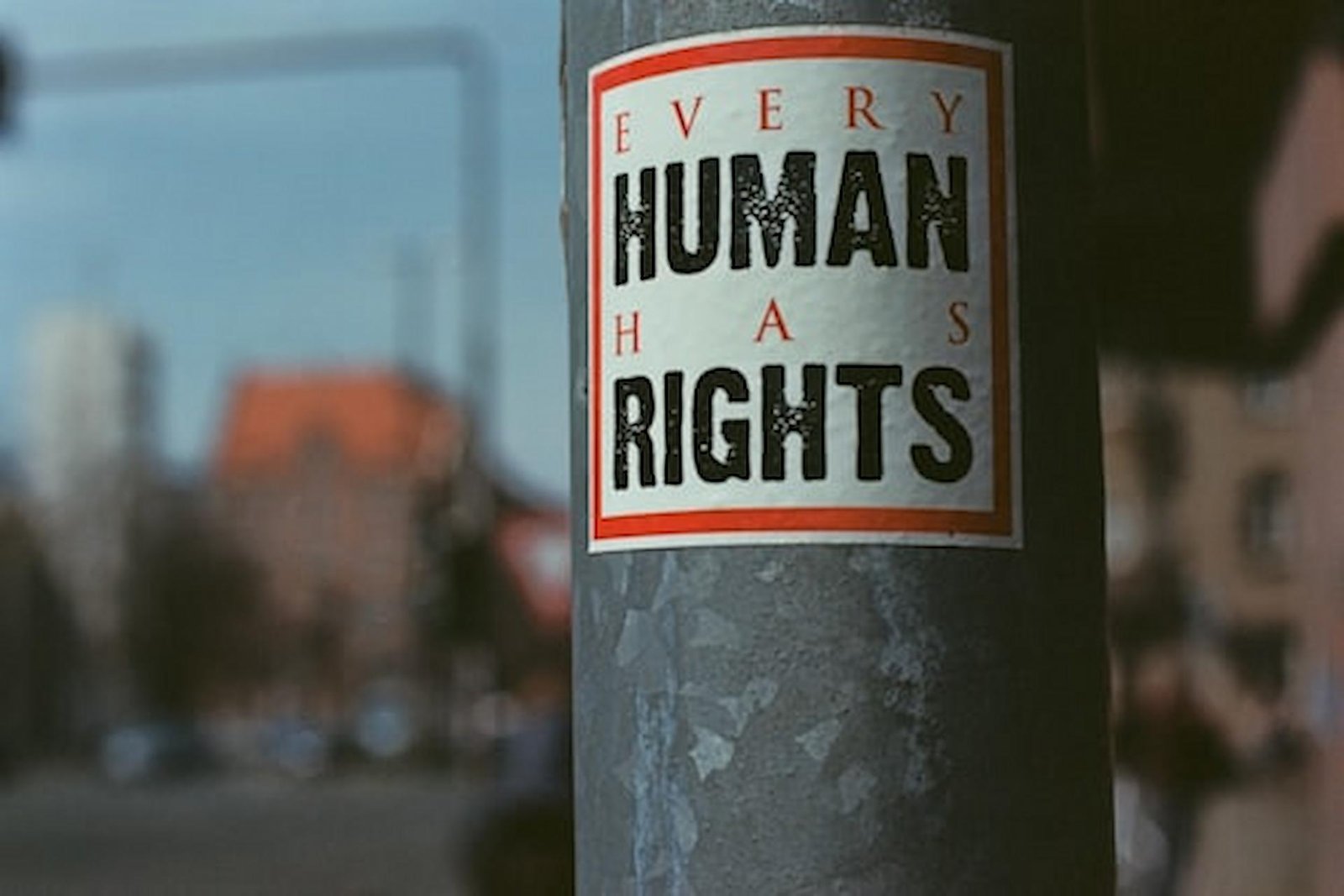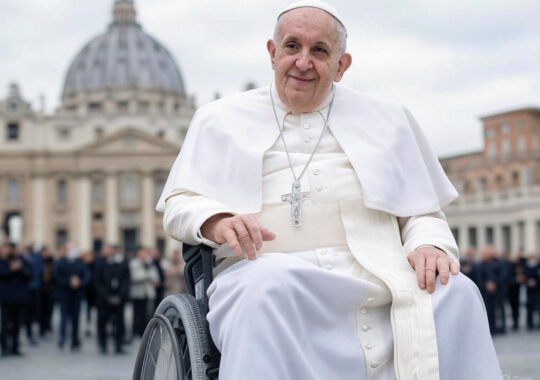Table of Contents
- Introduction
- Potential Rollbacks in Civil Rights Protections
- Effects on Educational Equity
- Economic Equity and Social Welfare Concerns
- Environmental Justice Implications
- Conclusion
Key Takeaways
- Project 2025’s proposals pose significant risks to civil rights enforcement, educational equity, and economic justice.
- Major rollbacks in federal protections could disproportionately impact marginalized communities, including people of color, low-income families, and children.
- Policy shifts in social welfare and environmental regulation may widen existing inequities and affect the quality of life for millions.
- Understanding the scope of these policies is crucial for advocacy efforts and community engagement.
Introduction
Project 2025, a comprehensive policy blueprint developed by conservative think tanks, has sparked considerable debate regarding its far-reaching vision for reforming federal government operations. Supporters praise its effort to streamline government, reduce bureaucracy, and return authority to the states. However, the broad changes proposed within Project 2025 have sparked concern among civil rights organizations, educators, and advocates for economic justice. Detractors warn that sweeping alterations in long-standing federal frameworks could jeopardize foundational protections within American society, with the potential to reverse decades of hard-won progress toward equality and justice.
At the heart of the controversy over Project 2025 is a proposal to fundamentally realign the federal government’s interactions with citizens, particularly in areas such as civil rights, education, and economic support. Many fear that dismantling key agencies and regulations could create gaps in legal protections, making it more difficult for marginalized communities to assert their rights and access essential resources. This policy platform, if enacted in whole or in part, could reshape the landscape of rights and equity for generations to come, with impacts that will resonate through every level of American life.
Potential Rollbacks in Civil Rights Protections
Central to Project 2025 is a dramatic shift in civil rights enforcement, aimed at reorienting the federal government’s role in protecting equal access and justice. The blueprint proposes restricting the Department of Justice (DOJ) to addressing discrimination solely through litigation, ending the use of administrative tools such as resolution agreements and consent decrees. Historically, these tools have enabled proactive and flexible responses to discrimination, as well as expedited resolutions for those harmed by unfair practices.
Such a change could significantly hinder federal efforts to address deeply embedded injustices and make it harder for government agencies and advocates to intervene before discriminatory patterns become entrenched. This diminished ability to intervene could impact vital areas, including fair housing, voting rights, workplace protections, and access to public services, particularly for historically marginalized groups. Another significant proposal is the elimination of the longstanding “disparate impact” standard. This legal doctrine has enabled advocates to challenge policies that, while neutral on their face, have disproportionate adverse effects on specific communities. Without this standard, it becomes significantly more challenging to challenge actions or policies that are structurally biased or produce inequitable outcomes. Discriminatory outcomes could increase, even if they are not overtly intentional or explicitly codified in law.
Effects on Educational Equity
Project 2025 aims to dismantle the U.S. Department of Education, shifting its duties to states in the name of local control. Supporters see this as fostering innovation, but critics warn it could weaken civil rights protections and widen inequalities, especially for low-income, minority, and marginalized students. The plan also promotes school choice through vouchers and savings accounts, which may divert resources from public schools. According to Time, such policies risk accelerating public school closures—already concentrated in underserved communities—leading to long-term harm to education, employment, and community stability.
If implemented, these changes could reshape the nation’s educational landscape for generations. Critics caution that the loss of consistent federal oversight may make it harder to ensure equal opportunity for all students.
Economic Equity and Social Welfare Concerns
Project 2025’s economic agenda proposes deep cuts to safety net programs like Medicaid and SNAP, which millions of low and modest-income Americans, particularly communities of color, depend on for healthcare, food security, and basic needs. Reducing access to these resources could increase poverty, hunger, medical neglect, and housing instability while widening the gap between rich and poor. The plan also seeks to roll back workplace protections, weakening wage standards, safety rules, and anti-discrimination measures, leaving workers more exposed to exploitation and unsafe conditions.
Environmental Justice Implications
The environmental policy elements of Project 2025 seek to roll back landmark environmental regulations and enforcement mechanisms. The partial dismantling of oversight institutions and scaling back of federal standards for air, water, and soil quality could have profound consequences, particularly in regions where polluting industries are already concentrated in or near low-income neighborhoods and communities of color.
Environmental watchdogs argue that weakening environmental protections will lead to increased health disparities and environmental degradation. Reduced oversight is likely to exacerbate existing inequities in environmental exposure, thereby placing additional burdens on communities that already face greater risks from pollution and environmental hazards. A rollback of these protections could result in higher rates of diseases linked to environmental factors, such as asthma and cancer, and increase the frequency of environmental crises, further reversing gains made through years of environmental justice advocacy and harming public health outcomes nationally.
Conclusion
Project 2025 represents an ambitious roadmap aimed at overhauling key sectors of the federal government. However, its prescriptions for civil rights, education, economic equity, and environmental policy raise grave concerns about the future of fairness and protection for marginalized populations. The intersection of these changes has the potential to reshape the country’s social safety net, the rights of vulnerable groups, and the quality of the environment for generations to come.
As debates continue about the merits and risks of its proposals, it is imperative for policymakers, advocates, and community members to remain informed and vigilant. The stakes are especially high for those whose voices have historically been sidelined in American policy debates. Ongoing dialogue and sustained advocacy are crucial to ensure that progress toward equity and justice is not only preserved but also advanced for all communities.
Table of Contents
- Introduction
- Potential Rollbacks in Civil Rights Protections
- Effects on Educational Equity
- Economic Equity and Social Welfare Concerns
- Environmental Justice Implications
- Conclusion
Key Takeaways
- Project 2025’s proposals pose significant risks to civil rights enforcement, educational equity, and economic justice.
- Major rollbacks in federal protections could disproportionately impact marginalized communities, including people of color, low-income families, and children.
- Policy shifts in social welfare and environmental regulation may widen existing inequities and affect the quality of life for millions.
- Understanding the scope of these policies is crucial for advocacy efforts and community engagement.
Introduction
Project 2025, a comprehensive policy blueprint developed by conservative think tanks, has sparked considerable debate regarding its far-reaching vision for reforming federal government operations. Supporters praise its effort to streamline government, reduce bureaucracy, and return authority to the states. However, the broad changes proposed within Project 2025 have sparked concern among civil rights organizations, educators, and advocates for economic justice. Detractors warn that sweeping alterations in long-standing federal frameworks could jeopardize foundational protections within American society, with the potential to reverse decades of hard-won progress toward equality and justice.
At the heart of the controversy over Project 2025 is a proposal to fundamentally realign the federal government’s interactions with citizens, particularly in areas such as civil rights, education, and economic support. Many fear that dismantling key agencies and regulations could create gaps in legal protections, making it more difficult for marginalized communities to assert their rights and access essential resources. This policy platform, if enacted in whole or in part, could reshape the landscape of rights and equity for generations to come, with impacts that will resonate through every level of American life.
Potential Rollbacks in Civil Rights Protections
Central to Project 2025 is a dramatic shift in civil rights enforcement, aimed at reorienting the federal government’s role in protecting equal access and justice. The blueprint proposes restricting the Department of Justice (DOJ) to addressing discrimination solely through litigation, ending the use of administrative tools such as resolution agreements and consent decrees. Historically, these tools have enabled proactive and flexible responses to discrimination, as well as expedited resolutions for those harmed by unfair practices.
Such a change could significantly hinder federal efforts to address deeply embedded injustices and make it harder for government agencies and advocates to intervene before discriminatory patterns become entrenched. This diminished ability to intervene could impact vital areas, including fair housing, voting rights, workplace protections, and access to public services, particularly for historically marginalized groups. Another significant proposal is the elimination of the longstanding “disparate impact” standard. This legal doctrine has enabled advocates to challenge policies that, while neutral on their face, have disproportionate adverse effects on specific communities. Without this standard, it becomes significantly more challenging to challenge actions or policies that are structurally biased or produce inequitable outcomes. Discriminatory outcomes could increase, even if they are not overtly intentional or explicitly codified in law.
Effects on Educational Equity
Project 2025 aims to dismantle the U.S. Department of Education, shifting its duties to states in the name of local control. Supporters see this as fostering innovation, but critics warn it could weaken civil rights protections and widen inequalities, especially for low-income, minority, and marginalized students. The plan also promotes school choice through vouchers and savings accounts, which may divert resources from public schools. According to Time, such policies risk accelerating public school closures—already concentrated in underserved communities—leading to long-term harm to education, employment, and community stability.
If implemented, these changes could reshape the nation’s educational landscape for generations. Critics caution that the loss of consistent federal oversight may make it harder to ensure equal opportunity for all students.
Economic Equity and Social Welfare Concerns
Project 2025’s economic agenda proposes deep cuts to safety net programs like Medicaid and SNAP, which millions of low and modest-income Americans, particularly communities of color, depend on for healthcare, food security, and basic needs. Reducing access to these resources could increase poverty, hunger, medical neglect, and housing instability while widening the gap between rich and poor. The plan also seeks to roll back workplace protections, weakening wage standards, safety rules, and anti-discrimination measures, leaving workers more exposed to exploitation and unsafe conditions.
Environmental Justice Implications
The environmental policy elements of Project 2025 seek to roll back landmark environmental regulations and enforcement mechanisms. The partial dismantling of oversight institutions and scaling back of federal standards for air, water, and soil quality could have profound consequences, particularly in regions where polluting industries are already concentrated in or near low-income neighborhoods and communities of color.
Environmental watchdogs argue that weakening environmental protections will lead to increased health disparities and environmental degradation. Reduced oversight is likely to exacerbate existing inequities in environmental exposure, thereby placing additional burdens on communities that already face greater risks from pollution and environmental hazards. A rollback of these protections could result in higher rates of diseases linked to environmental factors, such as asthma and cancer, and increase the frequency of environmental crises, further reversing gains made through years of environmental justice advocacy and harming public health outcomes nationally.
Conclusion
Project 2025 represents an ambitious roadmap aimed at overhauling key sectors of the federal government. However, its prescriptions for civil rights, education, economic equity, and environmental policy raise grave concerns about the future of fairness and protection for marginalized populations. The intersection of these changes has the potential to reshape the country’s social safety net, the rights of vulnerable groups, and the quality of the environment for generations to come.
As debates continue about the merits and risks of its proposals, it is imperative for policymakers, advocates, and community members to remain informed and vigilant. The stakes are especially high for those whose voices have historically been sidelined in American policy debates. Ongoing dialogue and sustained advocacy are crucial to ensure that progress toward equity and justice is not only preserved but also advanced for all communities.





